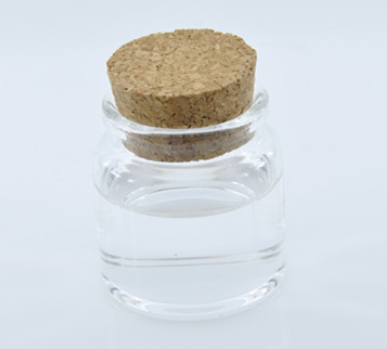Overview[1][2]
Triphenylmethane triisocyanate is an ester organic compound. It is mainly used for bonding rubber to metal and other materials. It is also widely used as a curing agent for chloroprene adhesives in the shoemaking industry.

Preparation[1][3]
Add 1 g of bis(trichloromethyl)carbonate and 10 mL of chlorobenzene into a 100 mL three-necked flask. After completely dissolving, add 2 g of tris(4-aminophenyl)methane and 10 mL of chlorine dropwise in an ice bath. mixed solution of benzene. After 1 h, the dropwise addition was completed, the reaction was continued in an ice bath for 1 h, and the temperature was raised to 70°C for 2 h. Hydrogen chloride gas is released during this period and is absorbed with NaOH solution. Continue to raise the temperature and reflux until no acidic gas is released, and the solution turns into a blue-purple clear liquid. Use a rotary evaporator to evaporate chlorobenzene at 75°C to obtain triphenylmethane triisocyanate
Apply[2]
CN201810255073.3 discloses a micro-nano-sized β-cyclodextrin polymer powder and its preparation method and application. Due to its special cavity structure of “hydrophilic on the outside and hydrophobic on the inside”, β-cyclodextrin can form host-guest inclusion complexes with guest substances of suitable volume in aqueous solution. The preparation method includes: dispersing β-cyclodextrin in a butanone solvent, using triphenylmethane triisocyanate as a cross-linking agent, heating and stirring for 2 to 10 hours without adding a catalyst or adding different types of catalysts. Afterwards, the polymer powder product was obtained by washing with acetone and hot water in sequence, and then dried at 60°C for 24 hours to obtain micro-nano-sized β-cyclodextrin polymer powder. The polymer powder can be used as an adsorbent material for the extraction and recovery of chlorinated phenol from wastewater. The advantage of this method is that the preparation process is simple, the β-cyclodextrin polymer powder obtained has micro/nano size, and the adsorption efficiency of chlorophenol is high.
Synthesis of adhesives[3]
Isocyanate adhesives have excellent chemical bonding mechanisms and have excellent adhesion to plastics, metals, wood, etc. In recent decades, it has been more widely used in industrial fields such as food packaging, electronics, shoemaking, and automobiles. Not only are there many varieties, but the output is increasing year by year. Isocyanate adhesives have many advantages such as no formaldehyde release, strong water resistance and aging resistance, and strong adaptability to the bonded materials. They have been accepted and valued by people and have become an important adhesive preparation in today’s industry.
1. Preparation of triphenylmethane triisocyanate adhesive
Weigh triphenylmethane triisocyanate and castor oil in molar ratio, add them into a three-neck flask, react at a certain temperature for a certain time, and add a little flour when the reaction is about to end to obtain triphenylmethane triisocyanate bonding agent.
2. Infrared spectrum analysis of triphenylmethane triisocyanate adhesive
3409 cm-1 is the -NH- stretching vibration peak of the secondary amine group; 3026 cm-1 is the C-H stretching vibration peak of the benzene ring; 2928 cm-1 is the C-H stretching vibration peak of the tertiary carbon group; 1900cm- 1 is the absorption peak of ester group C=O; 1524 cm-1 and 1578 cm-1 are the vibration peaks of the double bond of the benzene ring; 1018 cm-1 is the absorption peak of ester group C—O; 2218 cm-1 is N= C=O vibration peak, 851 cm-1, 815 cm-1 is the characteristic absorption of phenyl group. Based on the infrared spectrum, it was initially determined to be the target compound.
Main reference materials
[1] [Chinese invention] CN201810000171.2 Production device of triphenylmethane triisocyanate
[2] CN201810255073.3 A micro-nano-sized β-cyclodextrin polymer powder and its preparation method and application
[3] Feng Guirong, Zhang Huiru, Guan Junxia. Research on the synthesis of triphenylmethane triisocyanate adhesive [J]. Guangdong Chemical Industry, 2012, 39(15):101-102. [4]

 微信扫一扫打赏
微信扫一扫打赏

